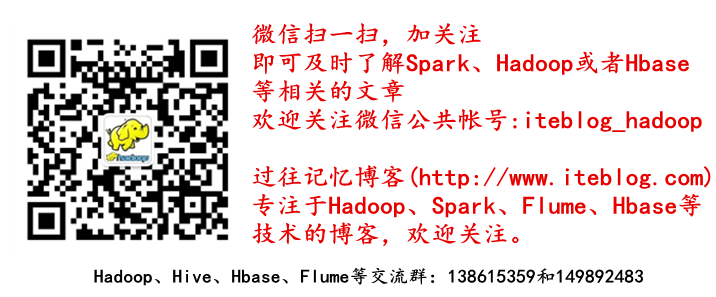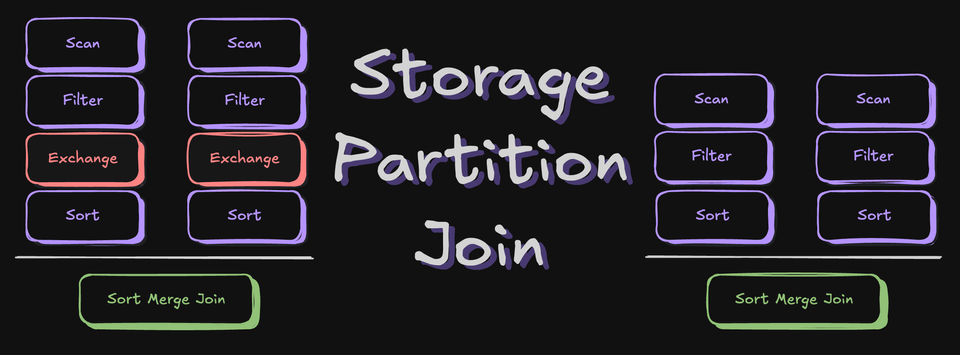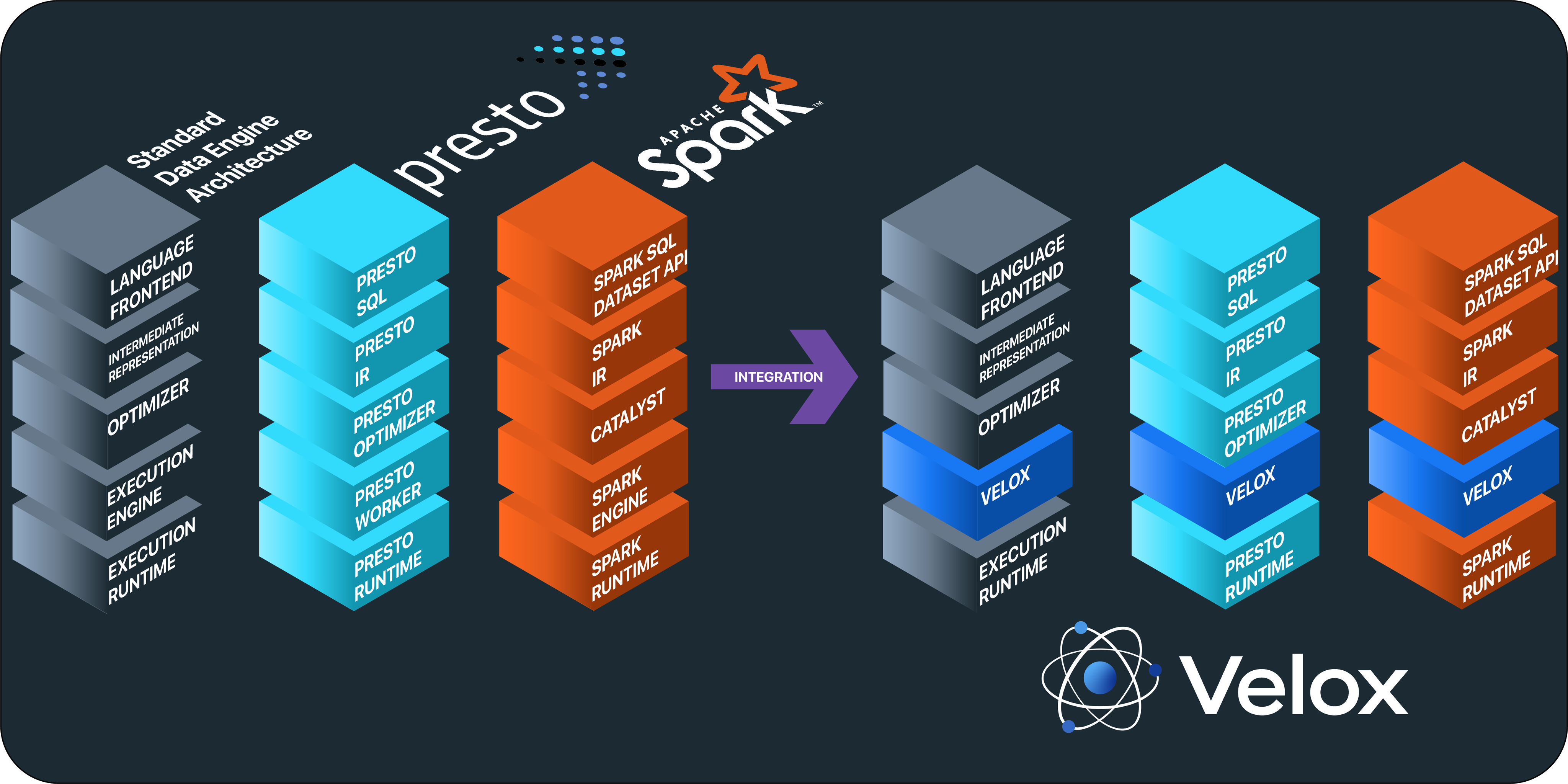文章目录
《Spark Python API函数学习:pyspark API(1)》
《Spark Python API函数学习:pyspark API(2)》
《Spark Python API函数学习:pyspark API(3)》
《Spark Python API函数学习:pyspark API(4)》
《Spark Python API函数学习:pyspark API(2)》
《Spark Python API函数学习:pyspark API(3)》
《Spark Python API函数学习:pyspark API(4)》
Spark支持Scala、Java以及Python语言,本文将通过图片和简单例子来学习pyspark API。


如果想及时了解Spark、Hadoop或者Hbase相关的文章,欢迎关注微信公共帐号:iteblog_hadoop
pyspark version
# print Spark version
print("pyspark version:" + str(sc.version))
pyspark version:1.2.2
map

# map # sc = spark context, parallelize creates an RDD from the passed object x = sc.parallelize([1,2,3]) y = x.map(lambda x: (x,x**2)) # collect copies RDD elements to a list on the driver print(x.collect()) print(y.collect()) [1, 2, 3] [(1, 1), (2, 4), (3, 9)]
flatMap

# flatMap x = sc.parallelize([1,2,3]) y = x.flatMap(lambda x: (x, 100*x, x**2)) print(x.collect()) print(y.collect()) [1, 2, 3] [1, 100, 1, 2, 200, 4, 3, 300, 9]
mapPartitions

# mapPartitions x = sc.parallelize([1,2,3], 2) def f(iterator): yield sum(iterator) y = x.mapPartitions(f) # glom() flattens elements on the same partition print(x.glom().collect()) print(y.glom().collect()) [[1], [2, 3]] [[1], [5]]
mapPartitionsWithIndex

# mapPartitionsWithIndex x = sc.parallelize([1,2,3], 2) def f(partitionIndex, iterator): yield (partitionIndex,sum(iterator)) y = x.mapPartitionsWithIndex(f) # glom() flattens elements on the same partition print(x.glom().collect()) print(y.glom().collect()) [[1], [2, 3]] [[(0, 1)], [(1, 5)]]
getNumPartitions

# getNumPartitions x = sc.parallelize([1,2,3], 2) y = x.getNumPartitions() print(x.glom().collect()) print(y) [[1], [2, 3]] 2
filter

# filter x = sc.parallelize([1,2,3]) y = x.filter(lambda x: x%2 == 1) # filters out even elements print(x.collect()) print(y.collect()) [1, 2, 3] [1, 3]
distinct

# distinct x = sc.parallelize(['A','A','B']) y = x.distinct() print(x.collect()) print(y.collect()) ['A', 'A', 'B'] ['A', 'B']
sample

# sample
x = sc.parallelize(range(7))
# call 'sample' 5 times
ylist = [x.sample(withReplacement=False, fraction=0.5) for i in range(5)]
print('x = ' + str(x.collect()))
for cnt,y in zip(range(len(ylist)), ylist):
print('sample:' + str(cnt) + ' y = ' + str(y.collect()))
x = [0, 1, 2, 3, 4, 5, 6]
sample:0 y = [0, 2, 5, 6]
sample:1 y = [2, 6]
sample:2 y = [0, 4, 5, 6]
sample:3 y = [0, 2, 6]
sample:4 y = [0, 3, 4]
takeSample

# takeSample
x = sc.parallelize(range(7))
# call 'sample' 5 times
ylist = [x.takeSample(withReplacement=False, num=3) for i in range(5)]
print('x = ' + str(x.collect()))
for cnt,y in zip(range(len(ylist)), ylist):
print('sample:' + str(cnt) + ' y = ' + str(y)) # no collect on y
x = [0, 1, 2, 3, 4, 5, 6]
sample:0 y = [0, 2, 6]
sample:1 y = [6, 4, 2]
sample:2 y = [2, 0, 4]
sample:3 y = [5, 4, 1]
sample:4 y = [3, 1, 4]
union

# union x = sc.parallelize(['A','A','B']) y = sc.parallelize(['D','C','A']) z = x.union(y) print(x.collect()) print(y.collect()) print(z.collect()) ['A', 'A', 'B'] ['D', 'C', 'A'] ['A', 'A', 'B', 'D', 'C', 'A']
intersection

# intersection x = sc.parallelize(['A','A','B']) y = sc.parallelize(['A','C','D']) z = x.intersection(y) print(x.collect()) print(y.collect()) print(z.collect()) ['A', 'A', 'B'] ['A', 'C', 'D'] ['A']
sortByKey

# sortByKey
x = sc.parallelize([('B',1),('A',2),('C',3)])
y = x.sortByKey()
print(x.collect())
print(y.collect())
[('B', 1), ('A', 2), ('C', 3)]
[('A', 2), ('B', 1), ('C', 3)]
本博客文章除特别声明,全部都是原创!原创文章版权归过往记忆大数据(过往记忆)所有,未经许可不得转载。
本文链接: 【Spark Python API函数学习:pyspark API(1)】(https://www.iteblog.com/archives/1395.html)








